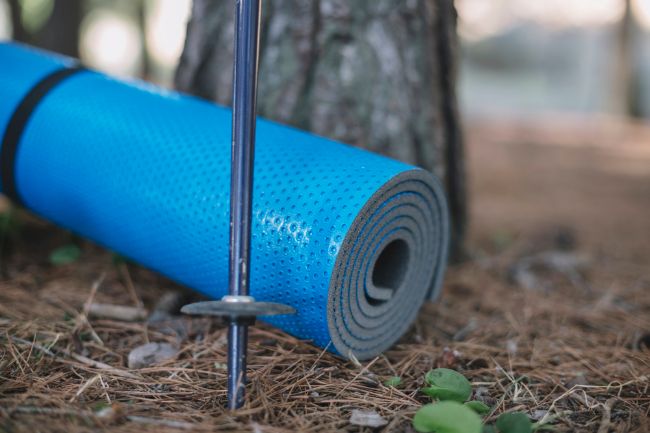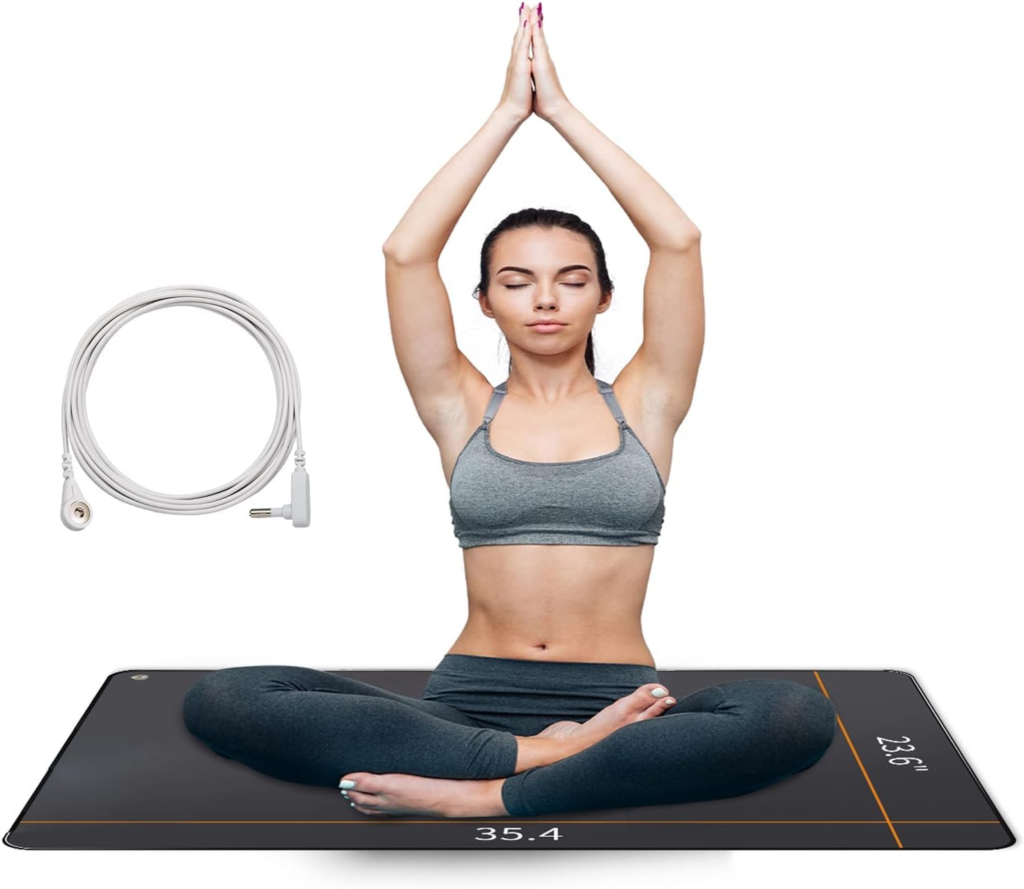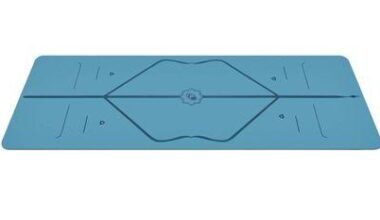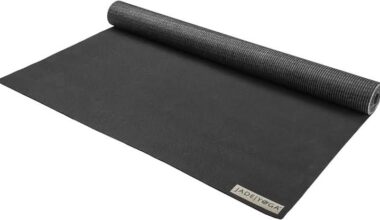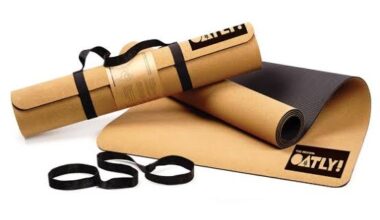Table of Contents Show
If you’ve been searching for a way to deepen your connection with nature and elevate your yoga practice, look no further than the earthing yoga mat. This revolutionary product promises to bring the healing power of the Earth right into your home, studio, or outdoor practice space. In this comprehensive guide, we’ll explore the concept of earthing, the benefits it offers, and the various types of earthing yoga mats available on the market. Get ready to embark on a journey that will transform your yoga experience and help you achieve a greater sense of well-being.
Earthing: What Is It, and How Does It Work?
Before diving into the world of earthing yoga mats, it’s essential to understand the concept of earthing itself. Earthing, also known as grounding, refers to the practice of connecting with the Earth’s natural electrical charge. The Earth has a negative charge, and our electrical bodies can absorb this charge when in direct contact with the ground.
Disclosure: As an Amazon Associate I earn from qualifying purchases.
When we walk barefoot on grass, sand, or dirt, we’re naturally grounding ourselves. However, modern lifestyles often prevent us from being in direct contact with the Earth, as we spend most of our time indoors and wear shoes with insulating soles. The lack of grounding can result in a buildup of positive charge in our bodies, which is believed to contribute to inflammation, stress, and various health issues.
Earthing proponents argue that reconnecting with the Earth’s electrical charge can help neutralize this buildup, providing numerous health benefits, such as reduced inflammation, improved sleep, and enhanced well-being.
The Science Behind Earthing
A growing body of research supports the concept of earthing and its potential health benefits. Studies have shown that grounding can help:
- Decrease inflammation: A 2015 study published in the Journal of Inflammation Research found that earthing could reduce inflammation by increasing the surface charge of red blood cells, which helps to alleviate pain, promote healing, and prevent the formation of blood clots.
- Improve sleep and reduce stress: A 2004 study published in the Journal of Alternative and Complementary Medicine discovered that grounding during sleep could help improve sleep quality, reduce pain, and lower stress levels.
- Enhance overall well-being: A 2012 review of earthing research published in the Journal of Environmental and Public Health concluded that grounding could improve a range of physiological measures, leading to better overall health and well-being.
It’s important to note that while the existing research on earthing is promising, more studies are needed to fully understand its effects and potential benefits.
Earthing Yoga Mats: Bringing the Earth’s Energy to Your Practice
An earthing yoga mat is designed to mimic the effects of walking barefoot on the Earth, allowing you to experience the benefits of grounding during your yoga practice. These mats are constructed with conductive materials, such as silver or carbon, which enable the transfer of the Earth’s electrical charge to your body.
There are various types of earthing yoga mats available, each with its unique features and benefits:
Silver-Infused Earthing Yoga Mats
Silver-infused earthing yoga mats contain a layer of silver fibers woven into the fabric. Silver is a highly conductive material, allowing the mat to transfer the Earth’s energy to your body when you’re in contact with it. These mats are often designed to be used with an accompanying grounding cord, which connects the mat to a grounded outlet or grounding stake placed outdoors.
Pros:
- Highly conductive
- Can be used indoors or outdoors
- May have antibacterial properties due to the presence of silver
Cons:
- Can be expensive
- May require regular cleaning to maintain conductivity
- Requires a grounding cord for indoor use
Carbon-Infused Earthing Yoga Mats
Carbon-infused earthing yoga mats feature a layer of conductive carbon material. Carbon is another excellent conductor of electricity, making these mats effective in transferring the Earth’s energy to your body. Similar to silver-infused mats, carbon-infused mats often require a grounding cord for indoor use.
Pros:
- Conductive
- Can be more affordable than silver-infused mats
- Can be used indoors or outdoors
Cons:
- Requires a grounding cord for indoor use
- May need regular cleaning to maintain conductivity
Dual-Layer Earthing Yoga Mats
Dual-layer earthing yoga mats combine the benefits of traditional yoga mats with grounding technology. These mats feature a top layer made from a standard yoga mat material, such as TPE or natural rubber, and a bottom layer infused with conductive materials like silver or carbon. The dual-layer design allows for a comfortable and supportive yoga practice while still providing grounding benefits.
Pros:
- Offers the cushioning and support of a traditional yoga mat
- Conductive
- Can be used indoors or outdoors
Cons:
- Can be more expensive than single-layer earthing mats
- Requires a grounding cord for indoor use
Choosing the Right Earthing Yoga Mat
With various types of earthing yoga mats available, how do you choose the right one for your practice? Consider the following factors when making your decision:
- Budget: Determine your budget and choose a mat that offers the best value for your investment. While silver-infused mats can be more expensive, they may provide better conductivity and antibacterial properties.
- Indoor vs. outdoor use: If you plan to use your earthing yoga mat exclusively outdoors, you may not need a mat with a grounding cord. However, if you want the flexibility to practice indoors and still experience grounding benefits, choose a mat that comes with a grounding cord.
- Cushioning and support: If you prefer a more cushioned and supportive mat, consider a dual-layer earthing yoga mat, which combines the benefits of a traditional yoga mat with grounding technology.
Caring for Your Earthing Yoga Mat
To maintain the conductivity and longevity of your earthing yoga mat, follow these care tips:
- Clean your mat regularly with a gentle, natural cleaner. Avoid using harsh chemicals that could damage the conductive materials.
- Allow your mat to air dry after cleaning.
- When using a grounding cord, ensure that it’s securely connected to the mat and the grounded outlet or grounding stake.
- Store your mat in a cool, dry place, away from direct sunlight to prolong its lifespan.
The Benefits of Incorporating an Earthing Yoga Mat into Your Practice
By using an earthing yoga mat, you can potentially reap the benefits of grounding while practicing yoga. These benefits may include:
- Reduced inflammation and pain
- Improved sleep and reduced stress
- Enhanced overall well-being
- A deeper connection with nature and the Earth’s energy
You May Also Like: Do Earthing Mats Work? Uncovering the 7 Scientifically Proven Ways
Earthing Mat Dangers: The Untold Truth
While earthing mats are designed to provide various health benefits, it’s essential to be aware of potential dangers and use them responsibly. Here are some typical earthing mat dangers:
1. Electrical Hazards:
- Shock Risk: Improperly manufactured or damaged earthing mats may pose a risk of electric shock.
- Overheating: In rare cases, a faulty mat or connection may lead to overheating, presenting a fire hazard.
2. Allergic Reactions:
- Material Sensitivity: Some individuals may be sensitive or allergic to the materials used in earthing mats, leading to skin irritation or other allergic reactions.
3. Misuse and Incorrect Setup:
- Improper Grounding: If the earthing mat is not correctly grounded, it may not effectively discharge static electricity, defeating its purpose.
- Incorrect Use: Using the mat on conductive surfaces like metal may cause unintended consequences or negate the desired effects.
4. Interference with Electronic Devices:
- Electromagnetic Interference (EMI): Earthing mats may interfere with the proper functioning of electronic devices or medical equipment in the vicinity.
5. Lack of Scientific Consensus:
- Limited Research: The scientific community has varying opinions on the efficacy and safety of earthing mats, and there is a lack of conclusive evidence supporting all claimed benefits.
6. Pre-existing Health Conditions:
- Consultation Necessary: Individuals with pre-existing health conditions or those using medical devices should consult with a healthcare professional before using earthing mats.
7. Quality and Source:
- Counterfeit Products: Poor-quality or counterfeit earthing mats may not meet safety standards and could pose unknown risks.
To mitigate these dangers, it is crucial to purchase earthing mats from reputable sources, follow the manufacturer’s instructions for proper use, and consult with a healthcare professional if you have any health concerns. Always prioritize safety and informed decision-making when incorporating such products into your lifestyle.
Conclusion
An earthing yoga mat can be a valuable addition to your yoga practice, helping you connect with nature and potentially improve your overall health and well-being. By understanding the concept of earthing, the types of earthing yoga mats available, and how to choose the right one for your practice, you can make an informed decision and elevate your yoga experience.
Frequently Asked Questions
Q1. Can I use an earthing yoga mat without a grounding cord?
A1: Yes, you can use an earthing yoga mat without a grounding cord if you practice outdoors on a conductive surface, such as grass, sand, or dirt. However, if you want to experience the grounding benefits indoors, you will need a grounding cord to connect the mat to a grounded outlet or grounding stake.
Q2. Can I use a regular yoga mat on top of an earthing yoga mat?
A2: It’s generally not recommended to use a regular yoga mat on top of an earthing yoga mat, as the additional layer could interfere with the mat’s conductivity. If you’re looking for extra cushioning and support, consider a dual-layer earthing yoga mat that combines the benefits of a traditional yoga mat with grounding technology.
Q3. How do I know if my earthing yoga mat is working?
A3: To ensure your earthing yoga mat is working correctly, make sure it’s clean and free of dirt or debris that could interfere with conductivity. If you’re using a grounding cord, ensure it’s securely connected to the mat and the grounded outlet or grounding stake. Some grounding cords come with built-in testers that can help you confirm the connection is functioning properly.
You May Also Like: A Guide to the Best Earthing Sheets: Top 5 Choices
Q4. Are there any potential risks or side effects associated with earthing?
A4: While earthing is generally considered safe, some people may experience mild side effects, such as tingling sensations or an initial increase in pain or inflammation. These side effects are usually temporary and can be reduced by gradually increasing the duration of your earthing sessions. As always, consult your healthcare provider before starting any new health practice, especially if you have a medical condition or take medication.
Q5. Can I practice earthing without a yoga mat?
A5: Absolutely! Earthing can be practiced by simply walking barefoot on grass, sand, or dirt, or by using other grounding products such as grounding sheets, grounding pillows, or grounding shoes. The key is to maintain direct contact with the Earth’s surface to experience the benefits of grounding.
Q6. Can I make my own earthing yoga mat?
A6: While it’s possible to create a DIY earthing yoga mat using conductive materials like copper or silver, it’s important to ensure the mat’s safety and effectiveness. Commercially available earthing yoga mats have been designed and tested to provide optimal grounding benefits. If you’re considering making your own mat, be sure to research the proper materials and methods, and consult with an expert if necessary.
Q7. How often should I replace my earthing yoga mat?
A7: The lifespan of an earthing yoga mat depends on the quality of the mat, its usage, and how well it’s maintained. Generally, a high-quality earthing yoga mat can last for several years with proper care. Signs that it may be time to replace your mat include a decrease in conductivity, damage to the mat’s surface or grounding components, or visible wear and tear.
Q8. How can I make my earthing yoga practice even more effective?
A8: To enhance the effectiveness of your earthing yoga practice, consider incorporating other grounding techniques or products. These may include:
- Practicing yoga outdoors, where you can experience the Earth’s energy more directly
- Incorporating grounding meditation or visualization techniques into your practice
- Using grounding sheets, pillows, or shoes in your daily life to increase your overall grounding time
Q9. Can I use an earthing yoga mat if I have a pacemaker or other medical devices?
A9: If you have a pacemaker or other implanted medical devices, consult your healthcare provider before using an earthing yoga mat or engaging in any grounding practices. While earthing is generally considered safe, it’s important to consider any potential interactions with medical devices or treatments.
Q10. Can children and pregnant women practice earthing yoga?
A10: Earthing is generally considered safe for people of all ages, including children and pregnant women. However, as with any new health practice, it’s best to consult a healthcare provider before introducing earthing yoga to children or during pregnancy. Start with shorter sessions and gradually increase the duration as you become more comfortable with the practice.
